Some Notes on Traveller
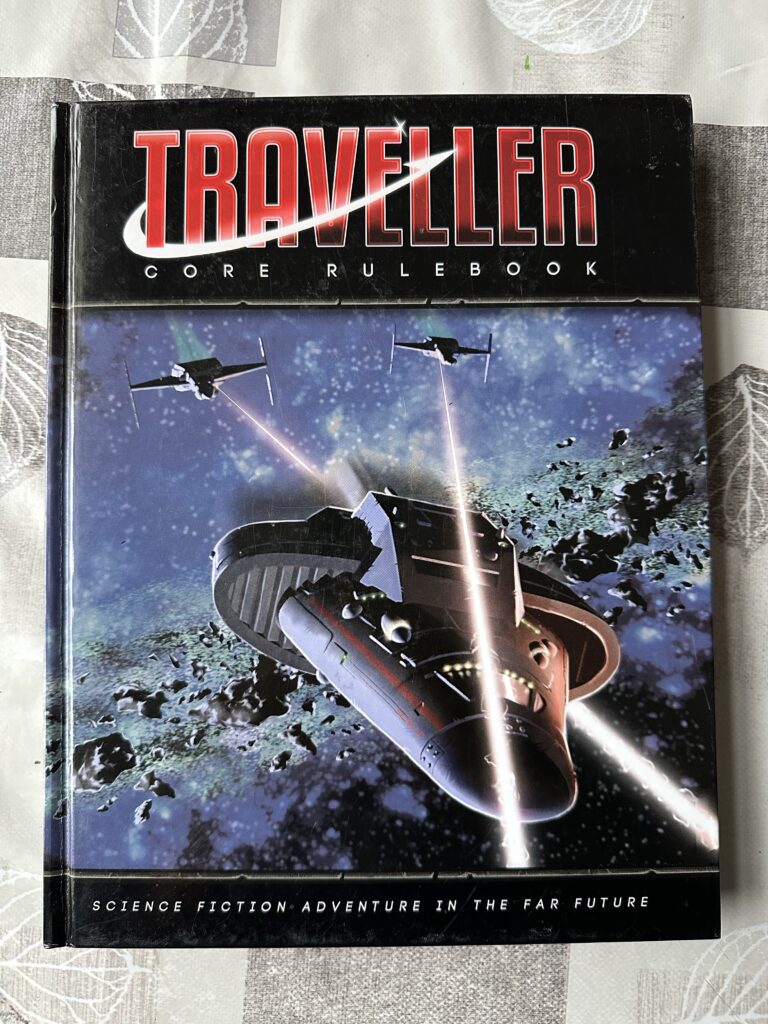
These past few years I’ve been catching up on a lot of classic roleplaying games that I’ve never played before, despite having several decades of play behind me. One of those was Traveller, so I was happy to finally run that with my Friday game! We ran about 15 sessions, across four scenarios, plus the usual extra shenanigans in between.
I liked the game and would like to play more of it, but my players didn’t! Oh noes! They sent Traveller all the way down their list of games! I’m a bit sad but as we’ll see, some of the blame was on me as the gamemaster. Hopefully, these “Notes on Traveller” will be useful for someone introducing Traveller to their group!
The 2D6 System
As evidenced by the photo at the top of the article, we ran with the latest edition, Mongoose’s second edition of Traveller. Since half of my players are big fans of GURPS, I strongly considered going back to the good old 1990s to run GURPS Traveller. But then I figured I wanted to actually, you know, play Traveller. And I guess it ain’t really Traveller if you’re not rolling 2D6.

I really liked the Traveller system. I’m a child of the 1990s so a system based on “attribute + skill” is usually my jam: you don’t need a skill to make a roll, you can mix and match the attribute and skill to represent different situations, and it has a certain, I don’t know, unified elegance to it. As I dug deeper into Traveller’s subsystems, like action scenes and ship combat, it all immediately made sense to me because it all sticks to this unified mechanic and overall “feel”. This is why I also like GURPS or the Year Zero Engine, for instance.
There’s just one dark spot: boon and bane dice. These are similar to the advantage and disadvantage dice you find in D&D 5e, or the bonus and penalty dice in Call of Cthulhu 7e. The problem is that there’s already a way to increase or decrease the difficulty of a roll: you change the target number! It’s 8 by default, but the gamemaster can increase or decrease it.
I really don’t like when a system gives you multiple ways to modify rolls. It’s confusing, it’s one more decision that the gamemaster must make, it’s superfluous, and it’s inelegant. As far as I can tell, this is a new addition from Mongoose, and it’s been a bit divisive among the fans. I suggest completely ignoring it, and sticking to raising or lowering the target number.
Traveller Creation
Of course, Traveller is famous for its character creation: you can die during it!
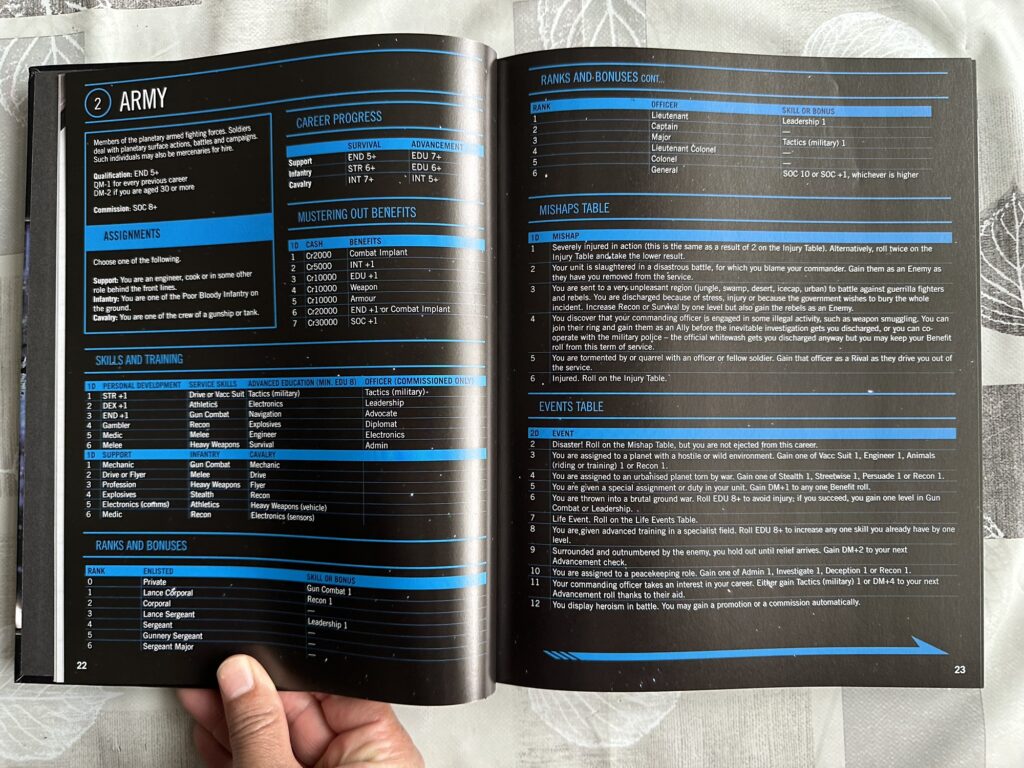
Well, not you, but your character. Your character can die while you create them. In practice, it could happen in the original editions of Traveller, but it’s almost impossible in Mongoose’s 2nd edition. What happens a lot, however, is characters getting injured, fired from their job, going into prison for some years, and other tragedies.
The Traveller character creation process is basically a little game of life. While some games have a “life path” system where you randomly generate your character’s personal history and so on, these games usually leave you in control of most of the mechanical parts of the character sheet. But not Traveller.
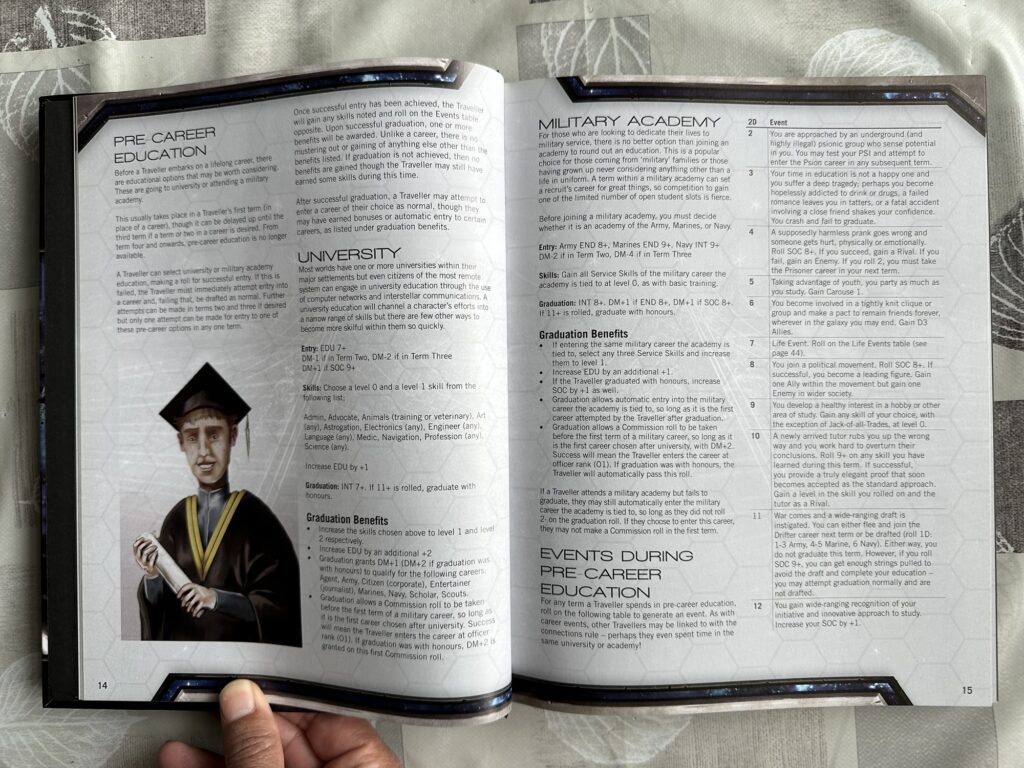
For instance, you don’t decide that your character is going to be, say, a Space Navy soldier that specializes in communications and plays music in their free time. In Traveller, you roll dice to see if you get accepted into military academy in the first place! Maybe you don’t and your dreams of playing a Space Navy soldier are crushed! Or maybe you get accepted but you don’t graduate, and your dreams of playing a Space Navy soldier are crushed! Or maybe you graduate, but you get into trouble, get sent to prison, and your dreams of playing a Space Navy soldier are crushed! Or you barely graduate and then a couple years into your service your leg gets blown up in battle, you get discharged, and your dreams of playing a Space Navy soldier are crushed! Plus, you now have a ton of medical bills to pay for that leg replacement! How does “medical debt” sound like for your Friday night escapism?
Anyway, you see the problem: you can’t go into Traveller character creation with any expectations. You just gotta roll with it, and see where life takes you. When you get lemons, you get what you get and you don’t get upset. Or something.
But my players did get a little bit upset. I didn’t make it clear enough that they should not have any clear idea of what they want to play — just a vague idea of what they want to see next in their character’s biography. So of course, they weren’t super happy with the end result, and in particular one player rolled horribly from start to finish.
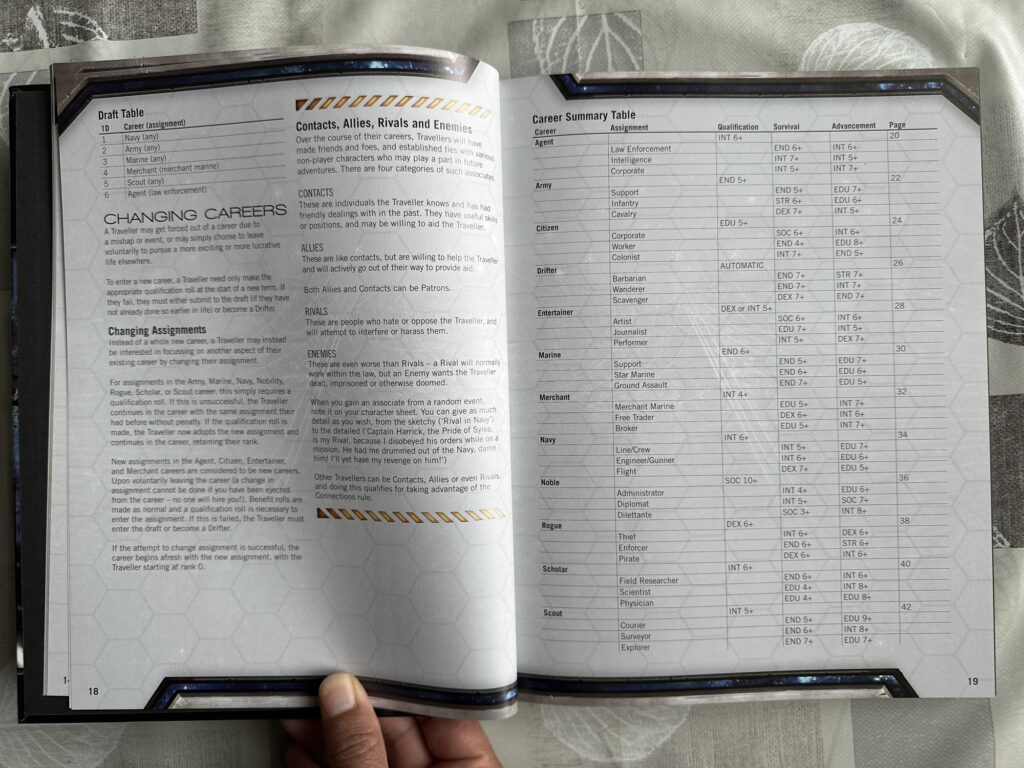
I can’t stress this enough: explain clearly to your players that they will definitely not end up with the character they want, so they should not want any particular character to begin with. And then say it again to make it super extra clear. Maybe show them some of the charts before hand. If the players are hesitant about the idea, grab the Traveller Companion, which has extra rules for a more “point buy” character creation, which is probably what I’ll pitch to my players if I ever get them to change their mind.
Training and Experience
And since we mentioned the Traveller Companion, I highly recommend checking out the alternate rules for character advancement in there.
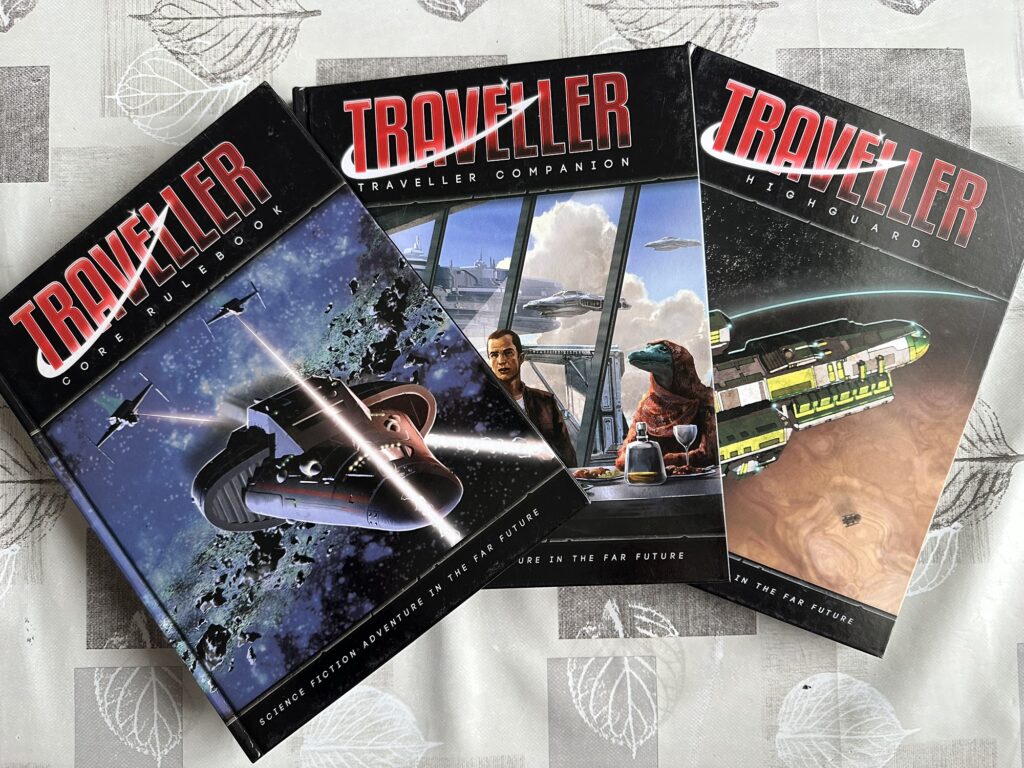
By default, improving your character’s skills is done during downtime. You spend a certain number of weeks training or studying, and then you make an EDU check. Traveller tries to be “realistic” here so it can take a long time to get your best skills further up. If you’re OK with your campaign going “One year later…” in between scenarios, then it’s all good. But if you think it could lead to “pausing” story threads in an unsatisfying or unconvincing way, then it’s not so good.
The optional rules in the Traveller Companion effectively add an XP system that simply lets players spend Experience Points on their character sheets. This is much recommended, especially if your players are a bit grumpy about how their life path turned out!
Pimp Up Your Ship
Some people think that the idea of a “character sheet” for your player faction and their headquarters was invented with some recent fancy modern game, but Traveller was already doing it in the late 1970s! You get stats for your ship, and you can improve it and pimp it up!
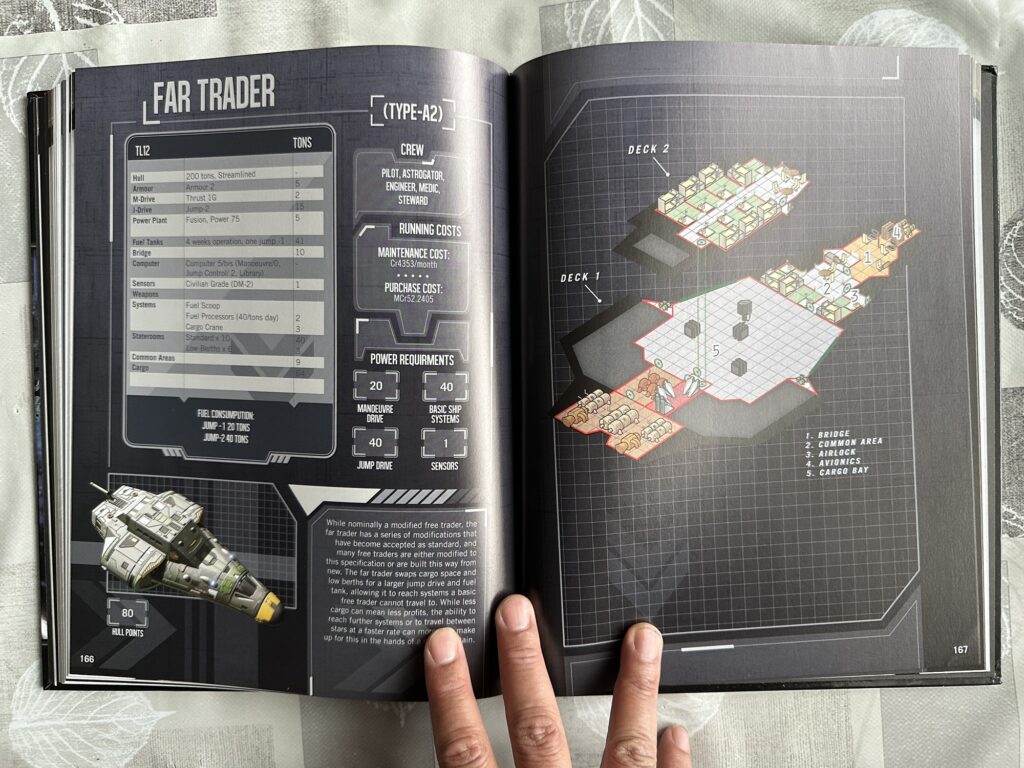
It’s a lot of fun, and one of the main attractions in Traveller. But it’s also the main driver of gameplay: usually, the whole point of taking on dangerous missions is to get enough money to pay the maintenance of your ship… plus, you know, repair all the stuff you broke in the previous dangerous mission.
In my opinion, this needs to be handled with care by the gamemaster.
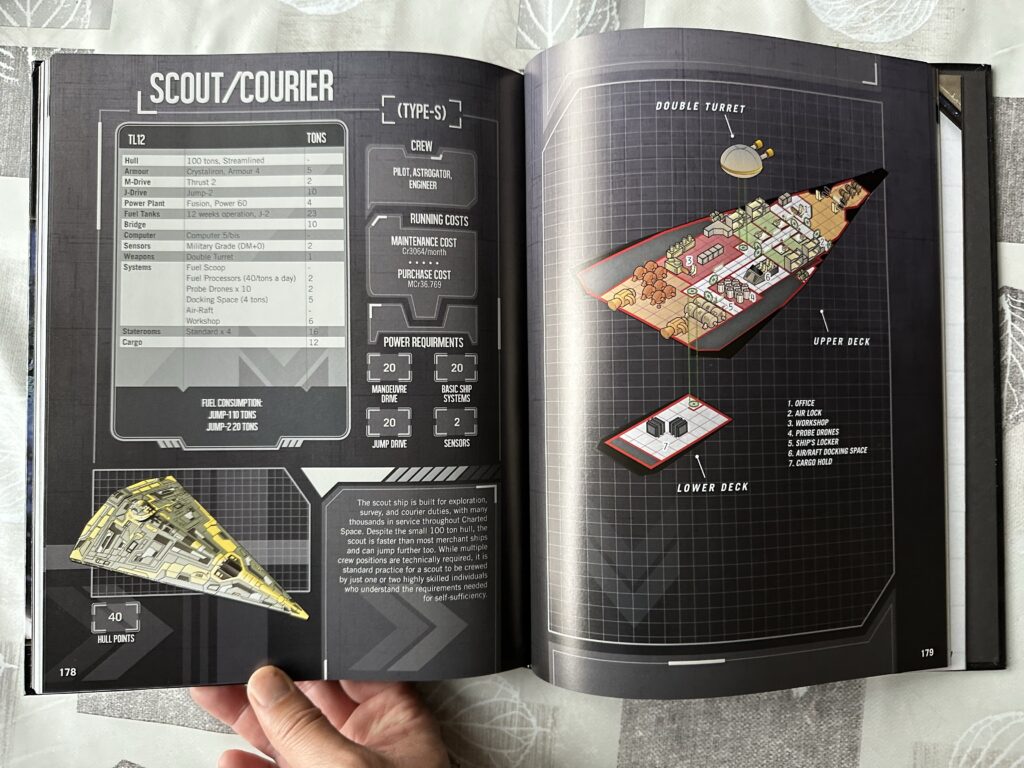
Everything is expensive and missions always go wrong. The players will end up very easily in the red, at risk of losing their ship, after only a couple of missions. In this day and age, that’s probably not the sort of escapism your players are looking for. I recommend being quite generous with mission payouts. Don’t make ship maintenance an issue (or better yet, ignore its cost completely!) and instead make the game about ship improvements.
Give the players the High Guard sourcebook and let them see all the cool stuff they could buy if they got more money. Occasionally, use ship combat to destroy one of the previously purchased modules, and then offer them a mission with way enough money to replace it. Make the game about how the ship evolves from mission to mission, not about whether the players will make ends meet and pay their bills!
Very occasionally, however, you can let the players be in the red just so that they have to take on passengers or cargo to complement their income. There’s also a lot of fun to be had when they get a quirky NPC on board, or a smelly and leaky container in their cargo bay.
The Third Imperium
One of the things my players didn’t like was the default Traveller setting. I apologize to the many of you who absolutely love the Third Imperium: the reason my players didn’t like it was probably because I don’t like it.
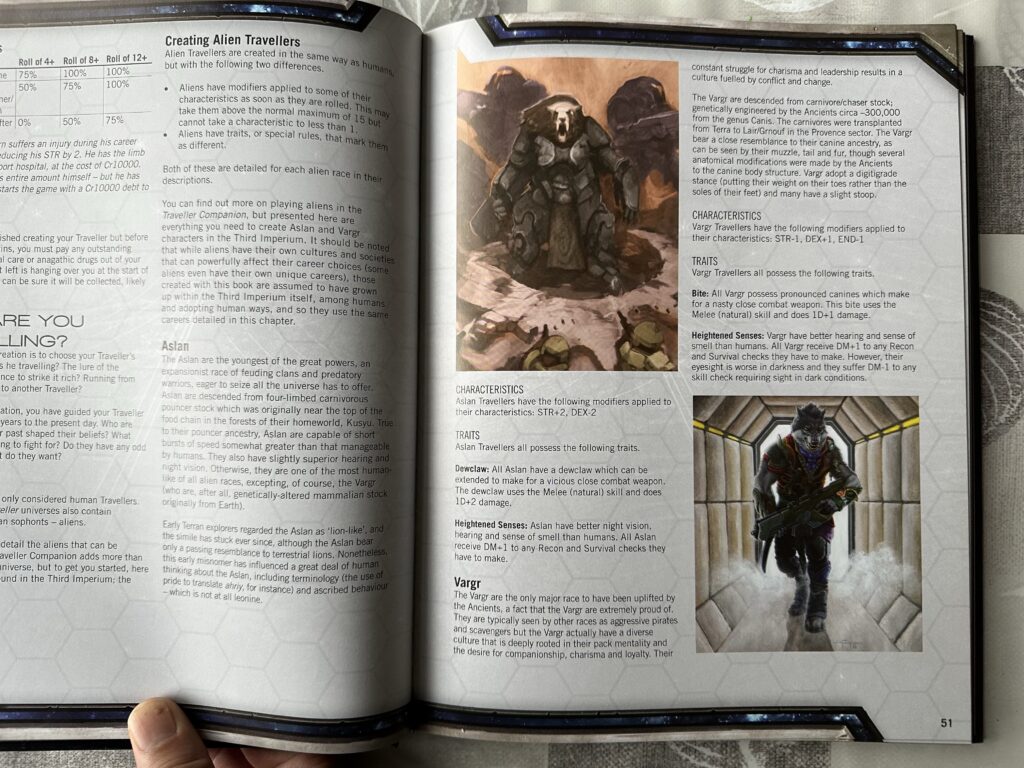
Okay, it’s not that I don’t like it, actually. It’s more like I don’t care much about it. I find it to be a bland sci-fi setting whose real value is that it was expanded ad-nauseam over the last 45 years. I look at a general overview of the Third Imperium and… I don’t know, it’s just “OK”. There’s nothing that grabs my curiosity and compels me to learn more. Talking dogs? Cat warrior empire? Space vikings? Dense politics in the core systems? Lawless frontier systems? Yeah, sure, it’s vaguely fun but mostly unsurprising. I’m usually a big fan of psionic powers, but both the rules and the Zhodani sort of leave me cold too. Go figure. It’s not you, Third Imperium, it’s me.
Anyway, since I’m not into the Third Imperium, I didn’t do a good job of showcasing it, and as a result my players weren’t into it either. My advice here would be to pick a setting you’re at least a bit passionate about it, because in theory, Traveller is setting agnostic!
The Third Imperium is just one possible setting, which happens to be widely loved and adopted, but just one nonetheless. The Traveller system is supposed to be usable with other sci-fi settings. In fact, the now out-of-print but quite excellent Traveller Starter Set (still available in PDF) offered a sandbox and mini-campaign set in a sort-of different setting… well not quite. It’s supposed to be in the same galaxy as the Third Imperium, but so far away from it that it might as well be a different setting. Anyway, you can get the campaign separately (also only in PDF).

In practice it’s not as clear cut. Depending on how “different” your setting gets, you’d have to do a fair amount of work, designing your own equipment, weapons, vehicles, ships and so on…. By and large, I think you’d have to stick to another bland sci-fi setting with either (1) just a couple of things that are different (like, say, how jump drives or weapons work), and/or (2) enough vibes and style to overcome the blandness. The TV series Firefly and Killjoys, for instance, happen in pretty by-the-book sci-fi settings in my opinion, but they have vibes and style oozing out of them. Now that I think of it, I may lure my players back to Traveller that way… mmmh.
Maps and Campaigns
You know that I’m a big cartography fan, right? Well, Traveller has lots of maps! Sector and sub-sector maps. Star system maps and planetary maps! I love it — although I wish there was a lot more of the latter. Plus it has the funky Universal World Profile (UWP) for planets, a series of letters and numbers that succinctly describe what to expect when you land there, allowing the gamemaster to easily improvise something. It’s very cool.
To get an idea of the cool factor of Traveller maps, go to the appropriately-named Traveller Map website and start scrolling, zooming, and clicking around. Don’t hesitate to follow the links to Traveller Worlds for the planetary maps. It’s all great! That’s one aspect of the Third Imperium I really love. It reminds me of my time spent play the old video game Elite.
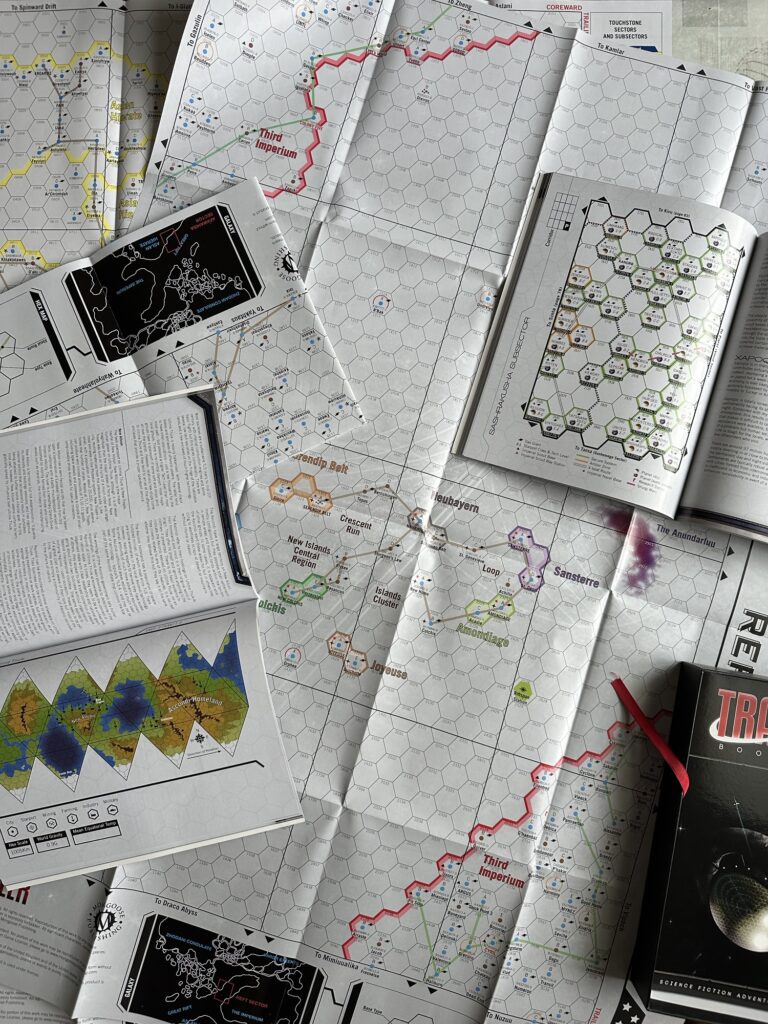
But there’s a problem. Traveller is adamant about how slow faster-than-light (FTL) travel should be: it takes one week to do a jump, regardless of your Jump Drive, which only affects how far you can jump in that one week. The point is to make communication and travel slow enough to have a sort of feudal space society with an “age of sail” feel to it. I totally get it, but it means you can’t have a “galaxy spanning campaign”. You can’t go to the core systems and get roped into imperial politics, uncover a plot about the Trojan Reach, rush there to stop the Aslan Empire from being baited into another war, realize the Zhodani were somehow involved behind the scenes, and end the campaign with a high-stakes infiltration of their crazy Consulate, or whatever. Why? Because the galaxy is a fucking big place when it takes a week to cross only a couple systems.
Going from the core systems to the Trojan Reach, for instance, would take more than a year. From there to the Spinward Marches would take about 8 to 10 months. You get this big galactic sandbox, but you can only enjoy it in bits. You don’t get to play in a big galactic space opera — you only get to choose between smaller galactic space operas. You either do a Core Systems campaign or a Spinward Marches campaign or a Trojan Reach campaign. If you play some scenarios near the Sword Worlds, good luck moving on to Pirates of Drinax afterwards… well, I guess you can just say “one year later” and move on but you better have a good explanation for why the characters left the systems where their families, friends, contacts, and client live, for a one year journey to a sector they literally don’t know. It’s not unrealistic — again, in the “age of sail”, people made the jump from Europe to the New World, but, well, let’s just say it’s not Star Wars or Star Trek.
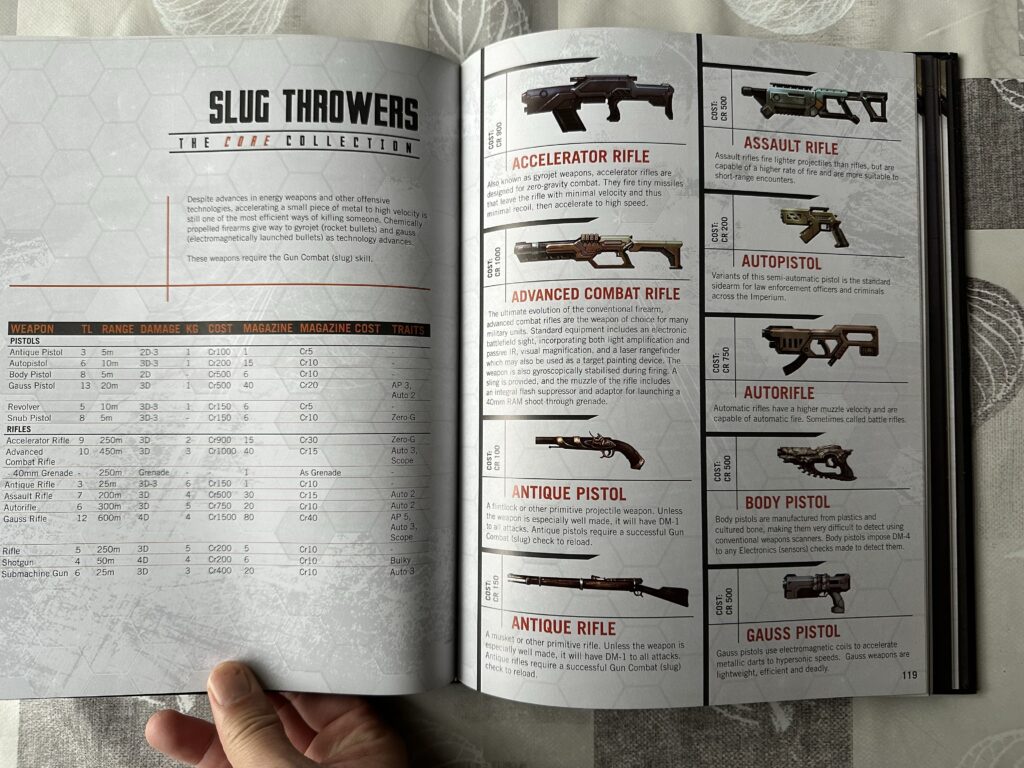
This was effectively about mismatched expectations. I had heard about the “big picture” of the Third Imperium setting, so I was a bit confused and disappointed when I realized you don’t really get to play through it. Instead, you pick a sub-sector and play within it, with occasional trips to adjacent sub-sectors. Oh well.
I don’t really have a good advice for this except that you should be aware of it. Which you should now be because you just read it! Isn’t that nice?
High and Dry
Last, a little bit of warning about the adventure High and Dry, which was the first adventure we played.
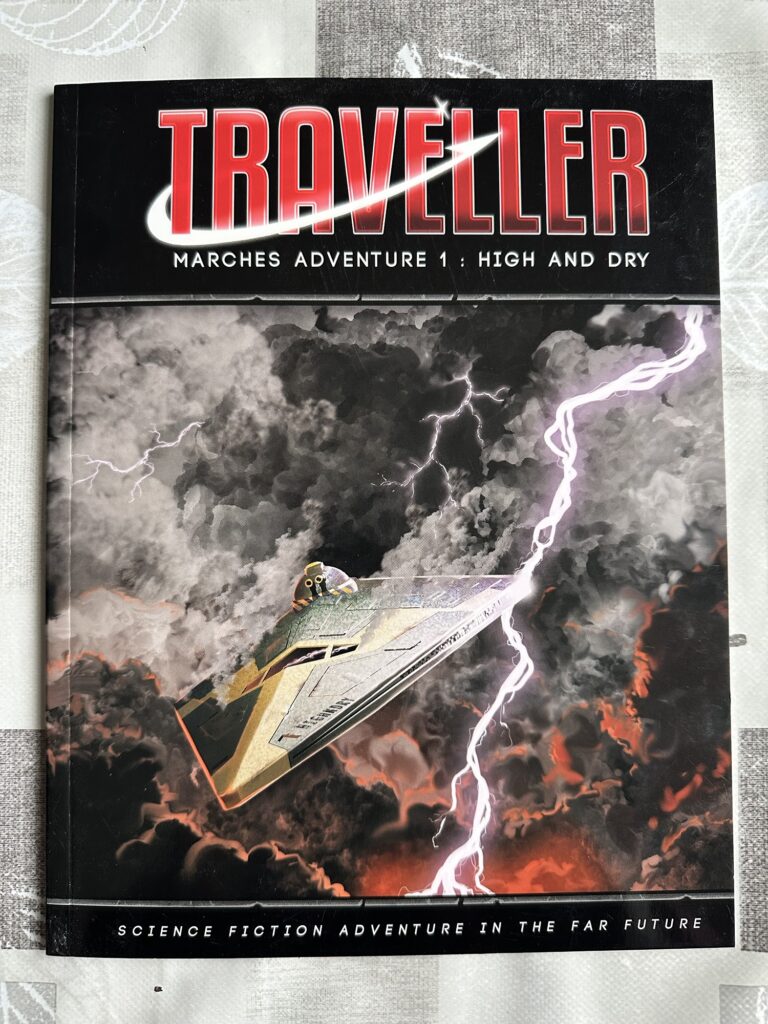
It’s a great adventure, and a perfect choice for starting a new campaign. It is set on and around Walston, in a sub-sector of the Spinward Marches. The PCs arrive there looking for an abandoned ship that they’re supposed to repair and bring back to owners, who are pissed that the last crew left it there and bailed out for some reason. There’s a lot of exciting stuff to do, and yet you get to play what’s shown on the cover of the scenario! Plus, if all goes well, the players effectively get their first ship here so, again it’s great starting point. Check out Seth Skorkowsky’s review for more information, and some really good advice for running it.
So what did I want to warn you about then? Well, spoilers: there’s a dog in this adventure. The dog has been abandoned by the ship’s previous crew, and the players will find the dog there, alone with the ship. My players were so pissed off by this that they vowed to track down the ship’s previous crew and “make them pay” for abandoning a dog in the middle of nowhere. This was effectively the whole campaign: they spent a dozen sessions tracking that crew, getting in trouble along the way, until the final adventure in which they ended up stranded on a dangerous jungle planet with the NPCs they’ve been hating all this time. Great fun! But anyway, watch out for the dog. He’s powerful.

Wow, once again, it looks like I had a lot more to say than I originally thought! And as I mentioned at the beginning of the article, I hope to GM or play some Traveller again, even though my Friday group doesn’t sound interested. Maybe I can show them Pirates of Drinax and that will convince them? One can hope, right?